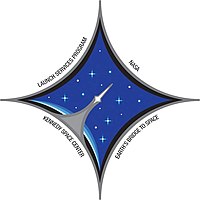User:Tazandsim
 | |
| Industry | Aerospace |
|---|---|
| Headquarters | Kennedy Space Center, FL |
| Website | Launch Services Program |
Launch Services Program (LSP) is responsible for NASA oversight of launch operations and countdown management, providing added quality and mission assurance in lieu of the requirement for the launch service provider to obtain a commercial launch license. Primary launch sites are Cape Canaveral Air Force Station (CCAFS) in Florida, and Vandenberg Air Force Base (VAFB) in California. Other launch locations are NASA's Wallops Flight Facility, in Virginia, the North Pacific’s Kwajalein Atoll in the Republic of the Marshall Islands, and Kodiak Island in Alaska. Since 1990, NASA has purchased ELV launch services directly from commercial providers, whenever possible, for its scientific and applications missions. ELVs can accommodate all types of orbit inclinations and altitudes and are ideal vehicles for launching Earth-orbit and interplanetary missions. The Launch Services Program was established at Kennedy Space Center for NASA’s acquisition and program management of Expendable Launch Vehicle (ELV) missions. A NASA/contractor team is in place to meet the mission of the Launch Services Program, which exists to provide leadership, expertise and cost-effective services in the commercial arena to satisfy Agencywide space transportation requirements and maximize the opportunity for mission success.
Objective
Provide safe, reliable, cost-effective and on-schedule processing, mission analysis, and spacecraft integration and launch services for NASA and NASA-sponsored payloads needing a mission on ELVs.
Historic Missions
Mars Exploration Rovers (MER-A & B) (Delta II)
NASA’s Mars Exploration Rovers were launched aboard Delta II vehicles from CCAFS. MER-A Spirit launched June 10, 2003, and MER-B Opportunity launched July 7 that same year. Both rovers reached Mars in January 2004. Information sent from the rovers back to Earth revealed the existence of water in the red planet’s past. Previous Mars missions include the 2001 Mars Odyssey spacecraft that launched from Space Launch Complex 17A at CCAFS April 7, 2001. The Mars Pathfinder began its journey to Mars atop a Delta II that launched Dec. 4, 1996, from Launch Complex 17-B. NASA’s first return to Mars after the Viking mission began with the launch of the Mars Global Surveyor atop a Delta II Nov. 7, 1996, from CCAFS Launch Complex 17-A. The Surveyor traveled to the red planet and spent approximately two years mapping the Martian surface to achieve a global portrait.
Stardust, Genesis, Deep Impact (Delta II)
On Feb. 7, 1999, a Delta II launched from Launch Complex 17-A at CCAFS carrying the Stardust spacecraft. Stardust collected comet dust and volatile samples during a planned close encounter with the comet Wild 2 in January 2004. Stardust also collected samples of interstellar dust, including the recently discovered dust streaming into our Solar System. This launch was unusual in that it was the first U.S. mission dedicated solely to the study of a comet. NASA’s Genesis spacecraft launched aboard a Delta II Aug. 8, 2001, from Launch Complex 17-A at CCAFS. Genesis collected samples of solar wind — invisible, charged particles that flow outward from the Sun. The particles will be studied by scientists to search for answers to fundamental questions about the exact composition of our star and the birth of our Solar System. The Deep Impact mission launched Jan. 12, 2005, from CCAFS and will reach Comet Tempel 1 in July 2005. The “flyby” spacecraft will collect images of the comet before its “impactor” spacecraft reaches the comet and after the impact to study the pristine interior of one of its craters. Solar and Heliospheric Observatory (SOHO) (Atlas IIAS) The SOHO spacecraft, a joint venture between NASA and the European Space Agency, was launched aboard an Atlas IIAS Dec. 2, 1995, from Space Launch Complex 36 at CCAFS. The SOHO spacecraft gathered data to study the internal structure of the Sun, its extensive outer atmosphere and the origin of solar wind, as well as the stream of highly ionized gas that blows Launch of the SOHO spacecraft Dec. 2, 1995, aboard an Atlas rocket.continuously through the Solar System. The information SOHO provided helped scientists better understand the interactions between the Sun and the Earth’s environment.
Launches
See LSPs website at: Launch Services Program
See also
- NASA
- Atlas V
- Boeing
- Delta II
- Delta IV
- Lockheed Martin
- United Space Alliance
- Commercial Spaceflight Federation
External links
- United Launch Aliance site Launch Provider
- Space X site Launch Provider
- Orbital site Launch Provider
- Space Flight Now Provides Space News including Launch Coverage
